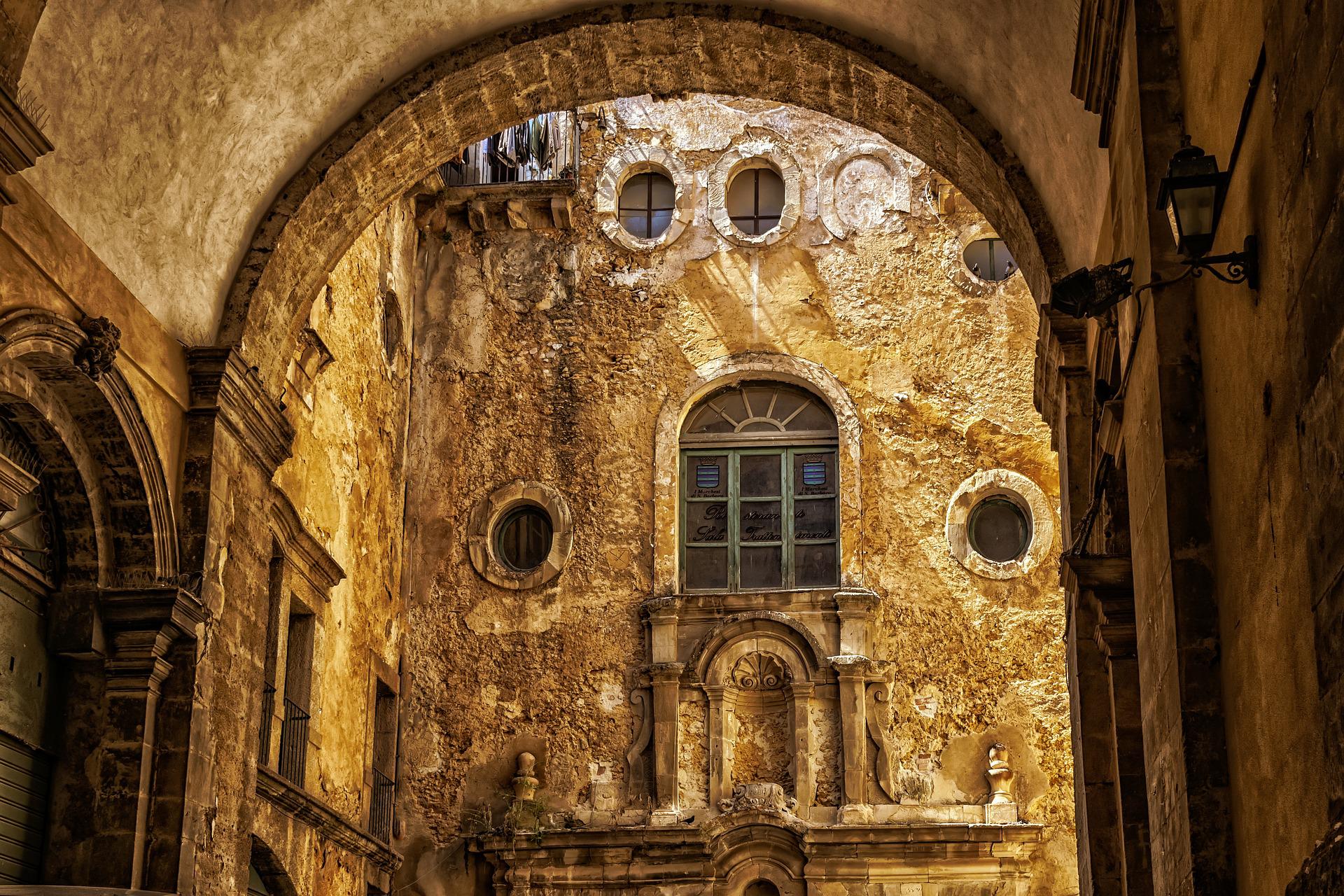Consolo describes this area of the Sicilian ancient hinterland. It is located on the Erei Mountains, between the plains of Gela, and Catania. The clay cracks are covered by the settlements that date back to the Paleolithic period. Caltagirone’s people have been making pottery for almost ten centuries before Christ. This is evident in a V century attic Krater, which reproduces a potter at his lathe. It is kept in the Museum of the Ceramics. The town was named Qal’at al Gharun, which refers to the clay process.
Local artisans were able to obtain the raw material from the clay caves, and the firewood from Santo Pietro. They became the island’s most important ceramics producers.
The exquisite art of weaving and the Sicilian embroidery seem to have inspired the pottery decorums.
The golden age of “The City of Ceramics” is the XV-XVII century. It is adorned with churches, institutes and colleges, as well as convents. The first university, which offers lectures in jurisprudence and philosophy, is established. A new, important hospital is also built in the town.
Caltagirone is destroyed by a devastating earthquake in 1693. This tragedy kills approximately 100 thousand people.
Even ceramic art is reborn with new artistic impulses thanks to the reconstruction of the city. In the artisans’ ovens, you can find vases, fonts for bell towers, houses, and small tiles, as well as sinks, frontals and sinks.
The flourishing activity of figurines begins in the early 800’s. Giacomo Bongiovanni started to represent clay faces and the actions of commoners as well as farmers, shepherds and performers. He literally “sewed” thin layers of clay onto “naked” figurines. Bongiovanni, almost unknowingly, depicted many of the same themes and subjects loved by realist writers like Verga or Capuana.
There are many attractions in the city that will capture your attention at every turn: the beautiful Public Gardens and the elegant noble palaces. The historic heart of the city is home to the magnificent central square, once known as Malfitania. Here you will find the former senatorial building, the former Theater Garibaldi and the Sturzo Gallery, which are now called the Sturzo Gallery (pawnshop).
There are many fine buildings all around including the Palace Crescimanno in Albafiorita, where Ferdinando di Borbone’s wife and their family were hosted when they visited the city in early 18th century. Further, there is the Libertini Palace of San Marco with its stunning internal staircase. This was once Ferdinando di Borbone’s seat when he established the city. It is also home to the Court of Justice Captain, a seventeenth-century seat of Court of Justice. In front of this building, you will find the magnificent municipal building, which was the former residence of Princes Interlandi of Bellaprima. The palace Guttadauro of Reburdone, and Maggiore of Santa Barbara are just a few of the other attractions. These were the homes of Emanuele Taranto and Bonaventure Secusio who all contributed greatly to the history of the city.
It’s impossible to list all the churches and convents once found in Caltagirone. The city’s narrow streets are reminiscent of Genoa’s narrow streets. They were named “carruggi” because they remind us of the Ligurian colonies who settled in the city.
It is enough to mention the Flemish Table by Vrancke Van der Stockt, which is now in the Diocesan Museum and the many vestments, paintings, and frescos found in its numerous churches.
The reason the city is so famous is its phantasmagorical colours, glazing and pottery blooms that can be seen in every street, alley, and corner.
The beautiful ceramics stairway with its 142 steps, almost a symbol for the past ten centuries of ceramics history, leads to the top and offers a stunning view. The ancient Church Matrix, dedicated to Santa Maria del Monte is located up there in an old fortified area.
The stairway is “flowered” in May to honor the Madonna. By the end of July, thousands of coloured oil lamps (coppi), are used to illuminate it for the feast of Saint Giacomo.
Caltagirone is home to a rich culinary history, which is well-known for its traditional sweets. These sweets are linked to the traditional festival cuddureddi (honey, almonds, or mulled wines biscuits).
